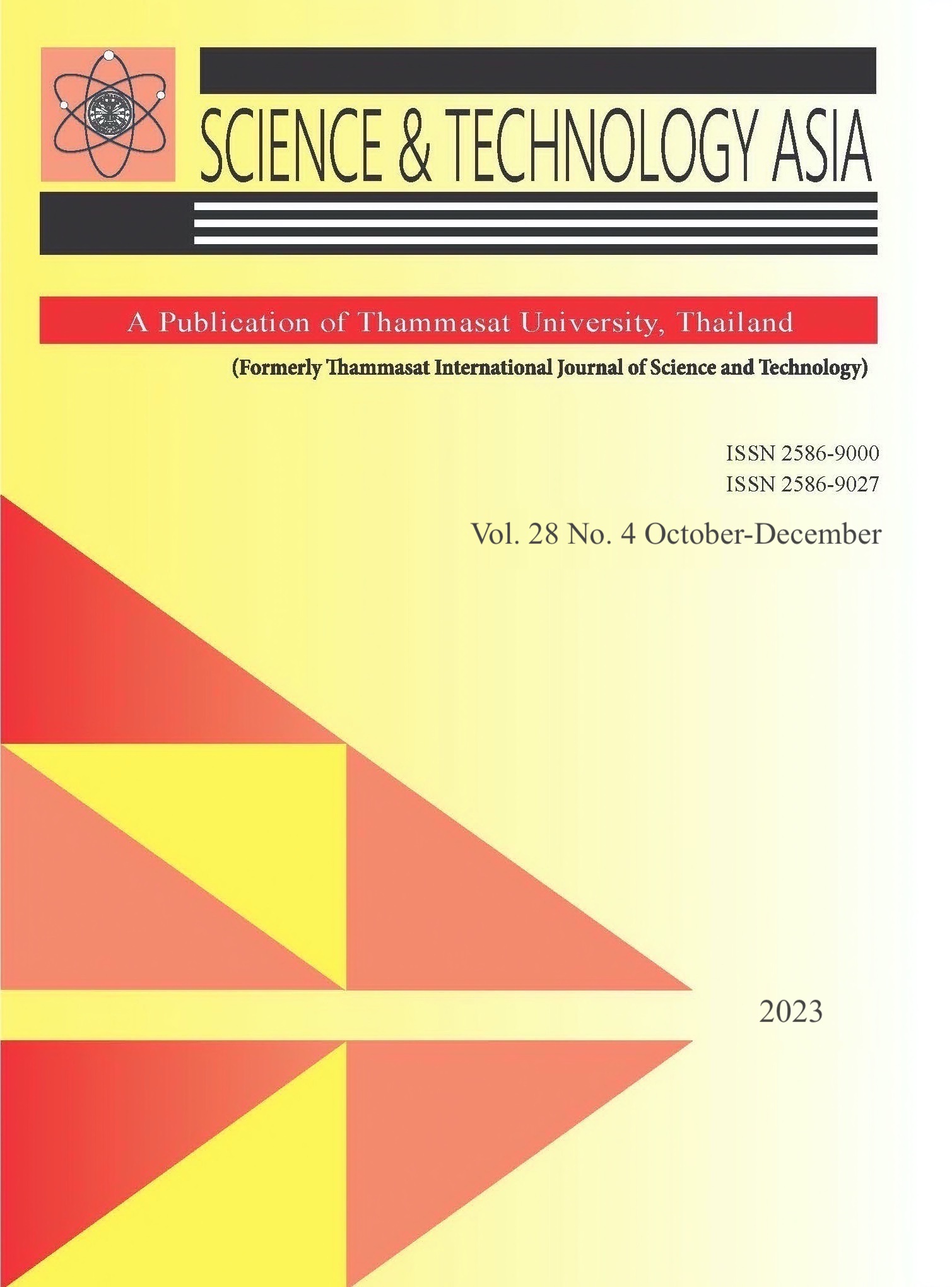Comparison of the Effectiveness of Regression Models for the Number of Road Accident Injuries
Main Article Content
Abstract
This article aimed to compare the effectiveness of regression models using data on the number of road traffic injuries from the Injury Surveillance System of the Thai Department of Disease Control between 2018 and 2022. The regression models used in this study for the count data include the Poisson, negative binomial, zero-inflated Poisson, zero-inflated negative binomial, and Conway-Maxwell Poisson models. These were compared to find a suitable regression model to predict the number of road traffic injuries. The results show that the negative binomial regression model provides an appropriate regression equation for predicting the number of road traffic injuries because it gives the lowest Akaike information criterion (AIC). Moreover, this model can still be used as a preliminary tool for predicting the number of road accident injuries since it does not rely on many independent variables.
Article Details

This work is licensed under a Creative Commons Attribution-NonCommercial-NoDerivatives 4.0 International License.
References
World Health Organization (WHO). Road traffic injuries. Available from:https://www.who.int/news-room/factsheets/
detail/road-traffic-injuries.
The Injury Surveillance System of the Department of Disease Control. The number of injuries from road accidents from 2018 to 2022. Available from:https://dip.ddc.moph.go.th/new/%E0%B8%9A%E0%B8%A3%E0%B8%B4%E0%B8%81%E0%B8%B2%E0%B8%A3/43-opd-dashboard.
Chaiyapet C, Phakdeekul W, Kedthongma W. Risk factors of severity of road accident injury incidence at Kut Bak district Sakon Nakhon province, Thailand. Res Militaris, 2022;12(5):835-45.
Jomnonkwao S, Uttra S, Ratanavaraha V. Forecasting road traffic deaths in Thailand: applications of time-series, curve estimation, multiple linear regression, and path analysis models. Sustainability, 2020;12:395.
Khemthong P. Accident prediction model for two-lane highways in Surin province [M.Eng. thesis]. Bangkok: King Mongkut’s Institute of Technology Thonburi;2013.
Lerdsuwansri R, Phonsrirat C, Prawalwanna P, Wongsai N, Wongsai S, Simmachan T. Road traffic injuries in Thailand and their associated factors using Conway-Maxwell-Poisson regression model. Thai Journal of Mathematics, 2022;Special Issue:240-9.
Ngamchan S. Accident Prediction Models for Expressways: Case Studies of the First and the Second Stage Expressway Systems [M.Sc. thesis]. Nakhonratchasima:Suranaree University of Technology; 2010.
Simmachan T, Wongsai N, Wongsai S, Lerdsuwansri R. Modeling road accident fatalities with underdispersion and zero-inflated counts. PLoS one, 2022;17(11):e0269022.
Sriwattanapongse W, Prasitwattanaseree S, Khanabsakdi S, Wongtra-ngan S. Mortality rate model due to transportation accidents in Thailand. Silpakorn University Science and Technology Journal, 2013;7(1):9-18.
Suphanchaimat R, Sornsrivichai V, Limwattananon S, Thammawijaya P. Economic development and road traffic injuries and fatalities in Thailand: an application of spatial panel data analysis, 2012–2016. BMC public health, 2019;19:1-15.
Chadbunchachai W, Suphanchaimaj W, Settasatien A, Jinwong T. Road traffic injuries in Thailand: current situation. Journal of the Medical Association of Thailand, 2012;95(Suppl 7):S274-81.
Suriyawongpaisal P, Kanchanasut S. Road traffic injuries in Thailand: trends, selected underlying determinants and status of intervention. Injury control and safety promotion, 2013;10(1-2):95-104.
Tanaboriboon Y, Satiennam T. Traffic accidents in Thailand. IATSS research, 2005;29(1):88-100.
Prasetijo J, Musa WZ. Modeling zero–inflated regression of road accidents at johor federal road F001. In MATEC web of conferences. EDP Sciences, 2016;47;03001.
Worku G, Tesfaw D. The application of count regression models on traffic accidents in case of Addis Ababa, Ethiopia. Abyssinia Journal of Science and Technology, 2020;5(1):26-33.
Numna S. Analysis of extra zero counts using zero-inflated Poisson models [M.Sc. thesis]. Songkla: Prince of Songkla University; 2009.
Srisuradetchai P, Junnumtuam S. Wald confidence intervals for the parameter in a bernoulli component of zero-inflated Poisson and zero-altered Poisson models with different link functions. Science & Technology Asia 2020;25(2):1-14.
Saputro MIA, Qudratullah MF. Estimation of zero-inflated negative binomial regression parameters using the maximum likelihood method (case study: factors affecting infant mortality in Wonogiri in 2015). In Proceeding International Conference on Science and Engineering, 2021;4:240-54.
Sellers KF. The Conway–Maxwell–Poisson distribution. Cambridge: Cambridge University Press; 2023.
Draper NR, Smith H. Applied regression analysis. New York: John Wiley & Sons; 1998.
Garay AM, Hashimoto EM, Ortega EMM, Lachos VH. On estimation and influence diagnostics for zero-inflated negative binomial regression models. Computational Statistics & Data Analysis, 2011;55(3):1304-18.
Lambert D. Zero-Inflated Poisson Regression, with an Application to Defects in Manufacturing. Technometrics, 1992;34(1):1-14.


